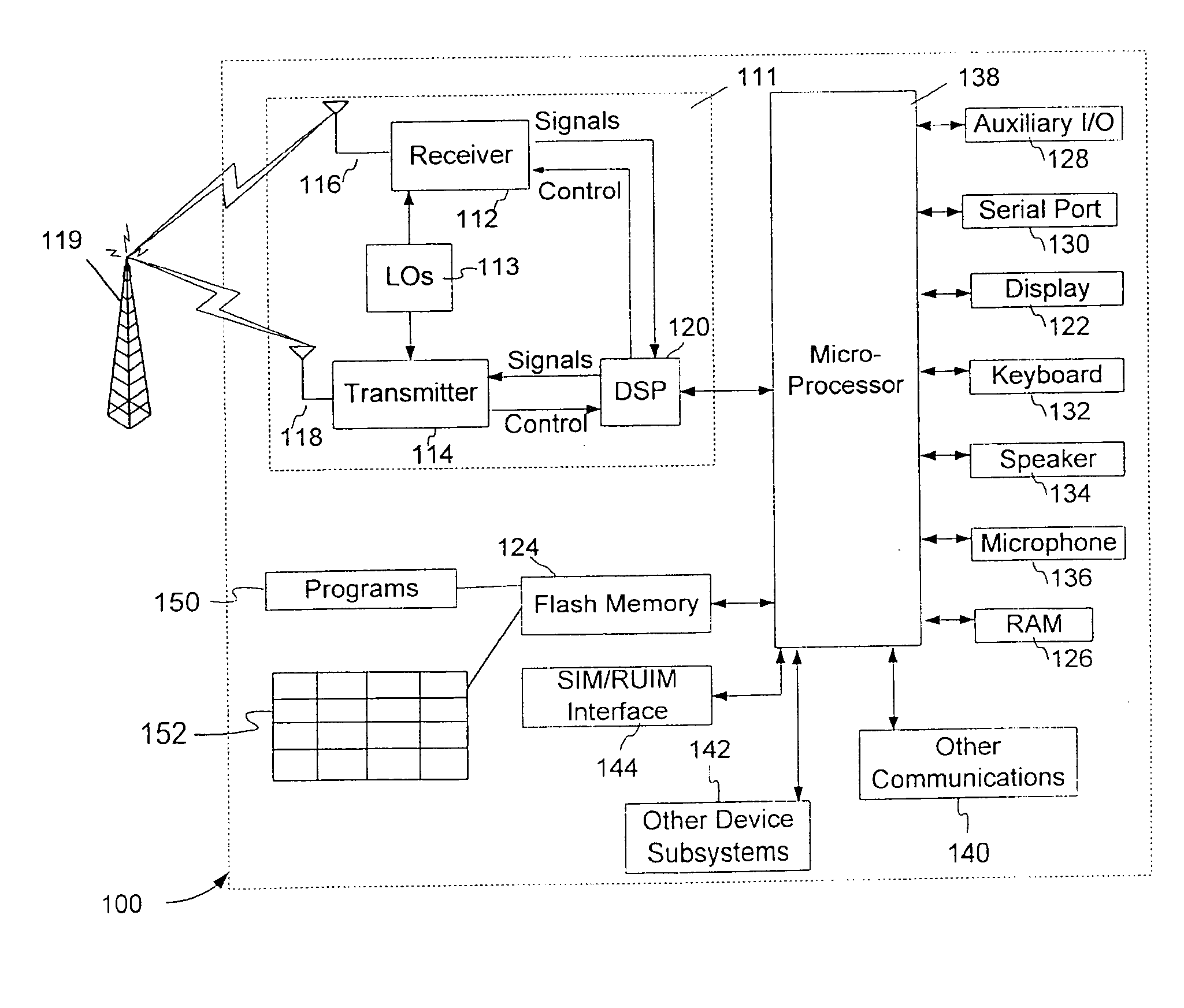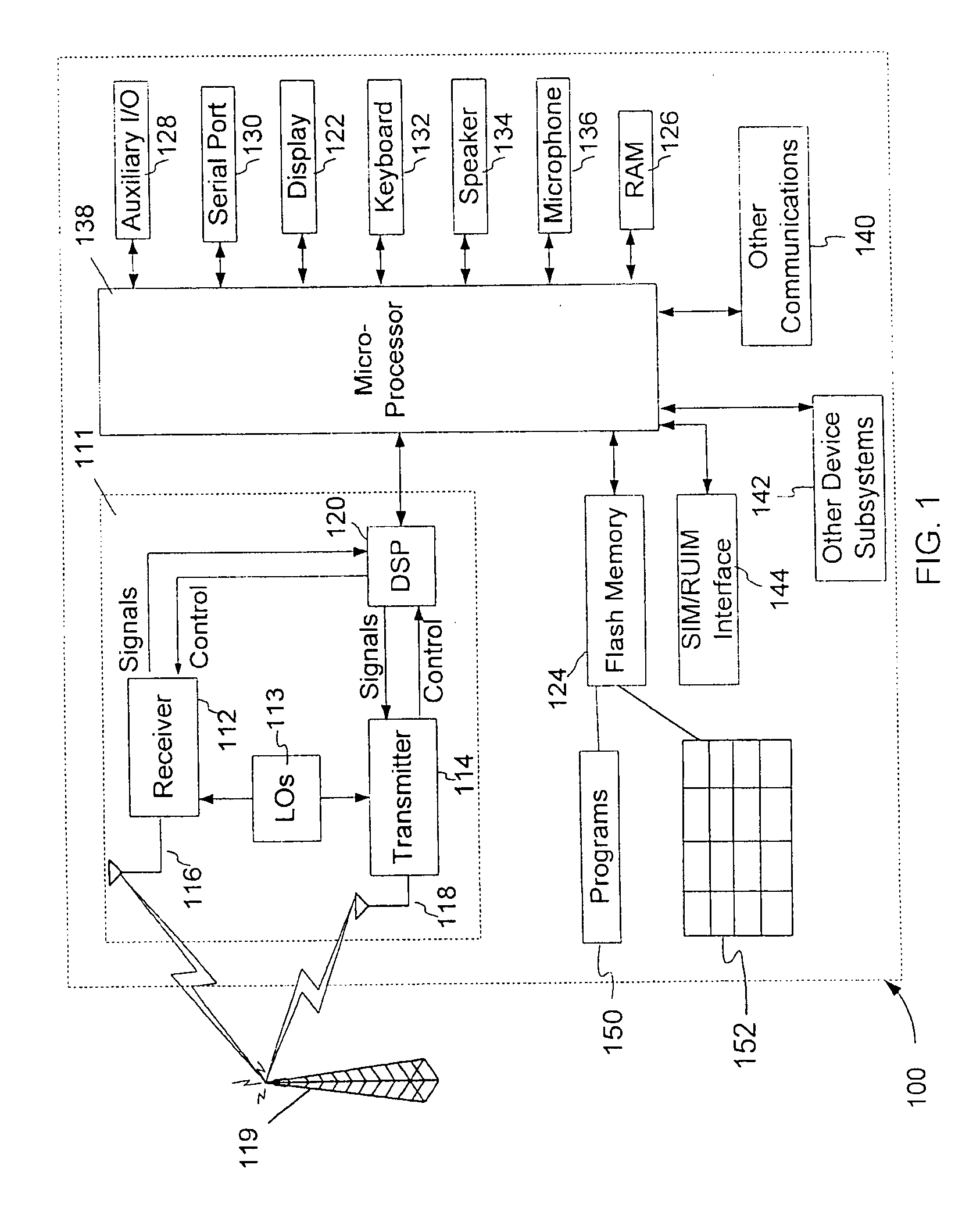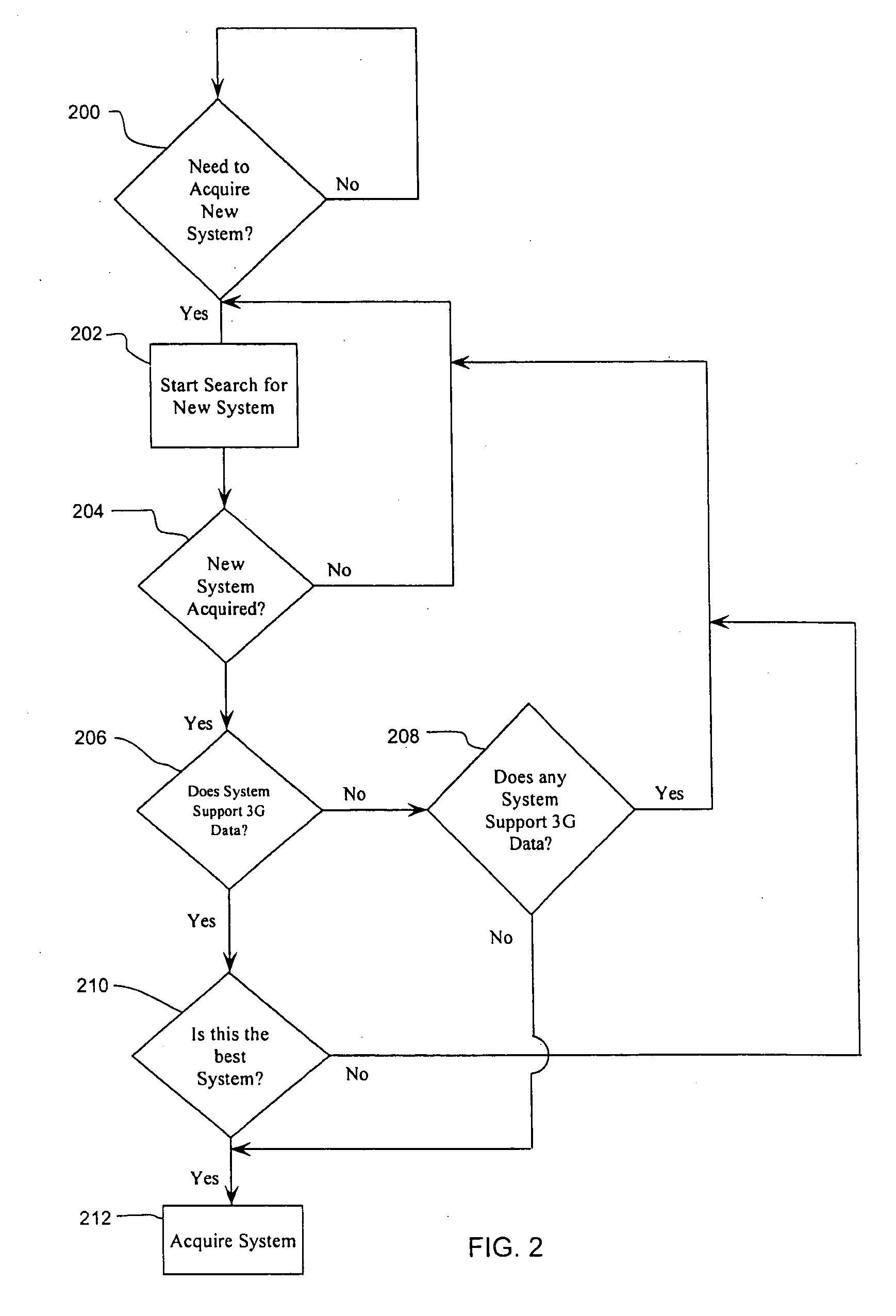Method and system for supporting network 3G data capability information in a CDMA network
a technology of cdma network and network data, applied in the field of cdma2000 mobile networks, can solve the problems of wasting battery power, not always supporting data services of third generation systems, and not allowing mobile devices to access data services
- Summary
- Abstract
- Description
- Claims
- Application Information
AI Technical Summary
Benefits of technology
Problems solved by technology
Method used
Image
Examples
Embodiment Construction
[0019] Referring to the drawings, mobile data device 100 is preferably a two-way wireless communication device. Where mobile data device 100 is enabled for two-way communication, it will incorporate a communication subsystem 111, including both a receiver 112 and a transmitter 114, as well as associated components such as one or more, preferably embedded or internal, antenna elements 118, local oscillators (LOs) 113, and a processing module such as a digital signal processor (DSP) 120. As will be apparent to those skilled in the field of communications, the particular design of the communication subsystem 111 will be dependent upon the communication network in which the device is intended to operate.
[0020] When required network registration or activation procedures have been completed, mobile data device 100 may send and receive communication signals over the network 119. Signals received by antenna 116 through communication network 119 are input to receiver 112, which may perform ...
PUM
 Login to View More
Login to View More Abstract
Description
Claims
Application Information
 Login to View More
Login to View More - R&D
- Intellectual Property
- Life Sciences
- Materials
- Tech Scout
- Unparalleled Data Quality
- Higher Quality Content
- 60% Fewer Hallucinations
Browse by: Latest US Patents, China's latest patents, Technical Efficacy Thesaurus, Application Domain, Technology Topic, Popular Technical Reports.
© 2025 PatSnap. All rights reserved.Legal|Privacy policy|Modern Slavery Act Transparency Statement|Sitemap|About US| Contact US: help@patsnap.com



